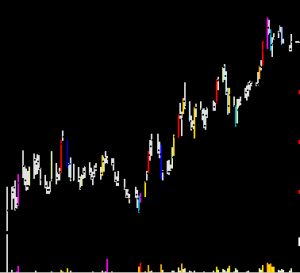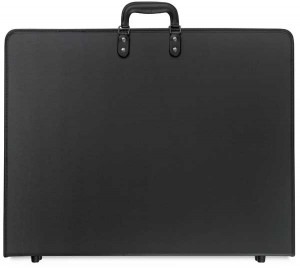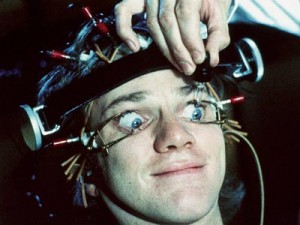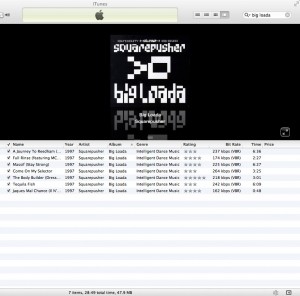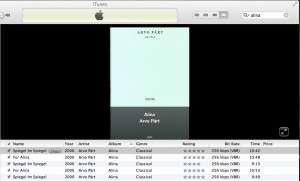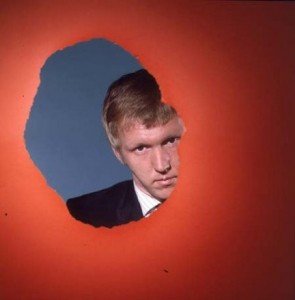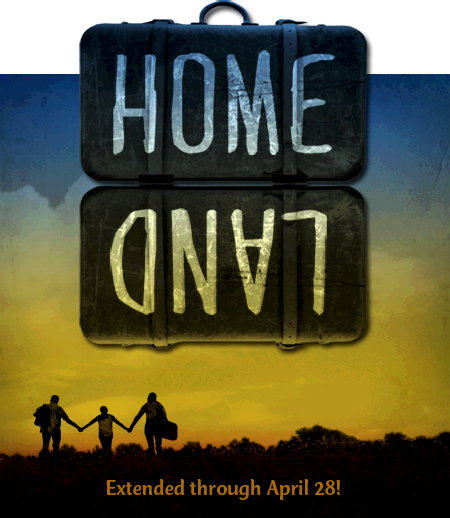Unprohibited Prophylactic
You Want Loops With That Shake?
Star Power Part 3: Conclusion
The Old Man and the C: Decision Time (Part 2)
Old Man and the C: Star Power (Part 1)
This week marks the beginning of an arduous and vitally important process: The Rating of the iTunes Library. You might think that as a music reviewer/writer this may be a relatively simple process, but you would be very wrong. I’ve always found the star rating system reductive, minimizing hundreds or thousands of hours of artistic sweat down to a cartoonish, linear constellation. On the other hand, every time I return to the 16,382 tracks currently engorging my hard drive (I reduced the collection by 60-some-odd-percent recently), the experience feels a bit like setting foot in the Smithsonian for the first time. Where do I even start?
So against artistic instinct, King Diamond, John Fahey and William Primrose are all now sporting the equivalent of stickers on a kindergarten “Good Behavior” chart.
What does 4/5 stars mean, you ask? I’ve decided to use the Netflix model (loosely) as a launch point. Here’s my version:
1 star: Causes compulsion to lance eardrums with rusty, Civil War-era bayonets
2 stars: Inspires constant eye-rolling and as such, dangerous while operating a motor vehicle
3 stars: Goooood
4 stars: I don your band’s t-shirt
5 stars: Face. Melted.
Next week on Old Man and the C: Decision Time
The Old Man and the C: La alegría en la música
Spektral has been deep in the sweaty task of excavating Gb Maj (among others) in Ravel’s sumptuous and stupefying quartet, and admittedly it has not been without its frustrations. For instance, finding that perfect fingering for the alto melody near the top of the 3rd movement, with its hurdles of sourdine, register and string crossings may or may not have resulted in the extemporaneous utterance: “Hang cur, hang, you whoreson, insolent noisemaker!” Wait no, that was Shakespeare.
In any case, the outrageously talented teens of the Albany Park Theatre Project inadvertently offered me a respite this weekend with Home/Land. First things first, it is one of the best pieces I’ve seen on stage and it’s been extended through April 28th, so you need to buy those tickets pronto (all previous shows have sold out). Devised by the actors and their APTP mentors from interviews with undocumented immigrants in Chicago, Home/Land weaves the real-life and often harrowing narratives of families broken apart, by among other factors, deportation. I’ll go ahead and admit that both myself and my three companions were doing the head-tilted-slightly-back-
Seriously, go see this show.
So how does this relate to Ravel? At the end of the play, with the audience at this point stunned silent and emotionally exhausted, the characters produce instruments from the many suitcases of which the stage is comprised. Some stomp-dance a beat as a viola and violin take up the melody. Then a trombone and french horn appear downstage. The entire cast [more ethnically diverse than any play you’ve ever seen, by the way] is jubilant, the music ricocheting off the angled, attic-level Laura Wiley Theater ceiling as faces begin to light up around the space. In that moment, music is not about tuning gnarly sevenths or matching tremolo strokes.
It’s about joy. Just joy.
The Old Man and the C: Sheiks Not of the "Iron" Variety
For this week's Old Man and the C, I would like to congratulate the Northwestern University cast and crew for a spirited production of Spring Awakening. Having only recently developed a fondness for musical theatre, I'll leave the reviews to those more qualified, but the high level of singing and staging for last Sunday's final performance was nothing short of remarkable. Keeping audience focus (mine, at least) off songwriter/composer Duncan Sheik's poetically pedestrian lyrics ("Still your heart says/The shadows bring the starlight/And everything you've ever been is still there in the dark night")
is a feat unto itself, and the demanding falsetto on display by tenors Max Cove (Moritz) and Alex Nee (Melchior) was impressively executed.
Also, there is a zesty number entitled, "Totally Fucked."
I may not be as drawn to Sheik's rock-ish score as most, and I did have to sit, mentally squirming, beside a septuagenarian as undergrads graphically simulated coitus, but the timeliness of a show about repression is undeniable. Most importantly, the excellent acting by the NU cast left me curious as to the play of the same title penned by German playwright Frank Wedekind from which the musical is derived. So thank you, Northwestern musical theatre department, for a memorable Sunday...and inspiring yet another trek to the Book Cellar.
The Old Man and the C: Come Get Psalm
There is so much more to an album than what fits in a 250-word review. In the case of Philip Blackburn's Ghostly Psalms, this is particularly distressing because of the immensity of the project and the sound universe within. The director of the excellent recording label Innova describes his inspiration for the titular work as follows:
"Ghostly Psalms sprang from the recurring anxiety dreams of an ex-chorister. But not the usual ones of being left behind on tour, singing a spectacular false entry, or holding the music upside down in front of a paying audience. This memorable one, from 1982, was about crawling uphill through a rocky desert with a crystalline trickle of clear water flowing uphill, entering a fortified mediaeval village (like Conques, perhaps) on the hilltop through a culvert, and walking into the abbey while voices played all around. The ceremony highlighted several ways of parsing the universe and making sense of how it all worked: through pure harmonic number ratios, dynamic ecosystems, vibration, brain activity, memory, order, and chaos: organic, mechanical, mystical."
This reminds me, tangentially, of the nightmarish sequences in Tarsem Singh's terrifying 2000 film, "The Cell". While Blackburn's writing is less likely to keep me checking and re-checking the front door locks at 2am, the music here is no less expansive in scope.
My favorite track on the album, truth be told, is Duluth Harbor Serenade (2011). I grew up spending summers on Lake Superior in Bayfield, WI, and the sounds of nearby Duluth recorded here are intimately familiar. Driving north toward Bayfield, you'll pass through Superior, where the steel is rusty and the ships are a constant fixture. Take a listen, and get lost in a symphony of lift bridges and chain saws. Not THOSE chain saws.
Canon Fodder: Thomalla's Albumblatt
Hans Thomalla: Albumblatt (2010) - www.hans-thomalla.com
Hans Thomalla was born in Bonn, Germany in 1975, he currently lives in Evanston, IL and teaches at Northwestern University.
First performance: 7/22/10. Written for the Arditti Quartet, commissioned by the Ernst von Siemens Foundation.
If you're looking for more, check out this video of Hans' opera, Fremd.
The lights turn on abruptly at the start of Hans Thomalla's Albumblatt. You are standing in an empty white room. Whether or not there is a floor is unimportant. You are not grounded by gravity or time. Strands of sound, shape and thought move past you, or is it the remnants of light swirling on the inside of your eyelids?
These strands float and whiz past, each with its own density and following its own arc. Occasionally, they coalesce into a fragment of a memory, the faded photograph of a past life. Memory, charged with the nostalgic beauty, but still fleeting.
I hope to offer you those few thoughts as a way of setting a mood for contemplative listening to this truly arresting piece. Hans has said the rest better than I ever could:
We know albums – or Poesiealbum, as they are called in German – from our childhood: the collection of entries from friends or family as an attempt to hold onto something ephemeral: seemingly inseparable friendship, a notable experience, a song or a poem that should not be forgotten; all of those stand next to leaves that have dried long ago, and whose decomposition lets us experience vanity rather than durability.
My composition Albumblatt is a study about these tries to get a hold of such unsteady phenomena: the players’ fingers slide in almost uninterrupted glissando across the fingerboard at the beginning of the piece, while bow-pressure and bow-tempo swell constantly. A restless sonorous flow, continuously changing its direction, and in which chords shine through only in passing – just long enough to be perceived before the notes drift on: short moments of orientation, memory, meaning.
A steady decrease in bow- as well as in glissando-tempo (up to their eventual halt) attempts to grip these chords, to literally hold on to them. But instead of a stable and fixated harmony a different type of sonorous world emerges, one that follows its own flow and eventually its own elusiveness. The grasp for the chords, the attempt to get a hold of those gestures, becomes a fleeting gesture itself.
Albumblatt is dedicated to the Arditti Quartet
Hans Thomalla, 2011
Repeating the Performance
Walking on stage at Ripon College's Demmer Recital Hall at 3 PM last Friday, Doyle and I were in good spirits. We had just spent the car ride past Milwaukee and Fond du Lac listening to some wild segments of the Walking the Room podcast and a little Buena Vista Social Club.
Having come in a separate car, Russ and Aurelien arrived a bit later and we got down to the business of getting comfortable in the space. While we bring our own stands to our concerts, the chairs were a little unusual. So, we all sat on big wooden piano benches. (A decision I would later regret when my tailbones were nearly bruised by the end of the show.) I love halls with acoustical curtains, and we were afforded that luxury here, being able to pull them at will.
Once we settled into a sound we liked, sampling large sections of Brahms' A minor Quartet, we covered all the standard spots we like to have in mind for Thomas Ades' Arcadiana and Haydn's Op. 77 No. 2. We know these spots because we've played this program several times before. While this is nothing remarkable to ensembles with more mileage than us, having a run of performances on a major and unchanging program has been a revelation for the comfort level it provides.
In fact, we were so ready for that night that we rehearsed for our following evening's show. We still had some sounds to unify in Marcos Balter's intricate Chambers, so while we had a stage to utilize we figured out our articulations in a rhythmic canon and our bow speeds in an infamous section.
I have to say, that night may not have been the most electricity we've ever had coming from an audience, but it's the most limitless I've found myself to be in performance. We took risks that I would've thought ridiculous just weeks before and didn't fall on our faces. We were able to express the big picture in Brahms while reveling in the details and play whisper-quiet in the Ades.
And the next day we played a wonderfully revised and contrapuntally rich piece in front of a most generous Chicago audience without fear. For us (and the audience members I talked to), Chambers is a work that feels 10 minutes long, but lasts 16. There are few greater compliments for a piece than that. The moving parts all fit into place so snugly and the sounds are so vividly colorful that the ear simply follows along without concern for the passage of time.
But, I'm clearly interested in the passing of time. Things are changing in the way I look at performing with each concert the quartet gives. I'm becoming more aware of the constant learning process that I'm a part of and finding new ways to free my mind to be a part of this ensemble we're building to present on stage.
Plus, what better way to learn how to live the performer's life than keeping yourself awake with the killer dubstep of Skrillex while flying down I-94 to get home from rural Wisconsin?
Ka-li-ma! Ka-li-ma!
I may or may not have recently cursed the name of Marcos Balter in an elaborate and fiery pagan ritual.
You see, he's written these parallel minor sixths that leap up and down the fingerboard in his newly-revised final movement of Chambers.
Commissioned by Spektral, we featured an early draft of this piece on our final concert of last season, and Marcos has been re-working it since. Witnessing this progression of the score is one of the felicities of being a new music player. Concepts transition from interesting idea to captivating sonic endeavor. Corners are navigated more effortlessly and redundancies are trimmed.
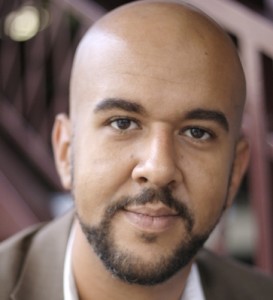 Back to the aforementioned pyre, there is another transition that takes place in this process: that of technical frustrations dissolving. What seems improbable slowly comes into focus as solutions to particularly gnarly passagework emerge. Those dense sixths are still a bear, but as we rehearse, their potency (and deliberateness on the part of the composer) is unearthed.
Back to the aforementioned pyre, there is another transition that takes place in this process: that of technical frustrations dissolving. What seems improbable slowly comes into focus as solutions to particularly gnarly passagework emerge. Those dense sixths are still a bear, but as we rehearse, their potency (and deliberateness on the part of the composer) is unearthed.
What started as a fist shaken at the sky becomes a high five to a wickedly talented composer.
-Doyle
Come see us play Chambers this Saturday night at 8PM in Fulton Hall at the Unversity of Chicago: Concert Details
Canon Fodder: Haas 2
Georg Friedrich Haas: String Quartet No. 2 (1998)
Haas was born in Graz, Austria in 1953. His childhood was spent in the mountains along the Swiss border and he currently lives and works in Basel, Switzerland.
The Second Quartet was commissioned by the Wiener Konzerthaus for the Hagen Quartet.
My other favorites (not for string quartet) by this composer are In Vain and …und…
The Second String Quartet of G.F. Haas opens in the bedrock. The cello's open C string anchors the entire opening four minutes of the piece. We know where we are, and where we have been.
However, atop this seemingly impervious rock, minerals are interacting and tectonic plates are slowing grinding. The rest of the quartet traverses the complex, high overtones of the cello's C. The harmonies are full of potential energies and unexpected geodes.
Then, at 4:19 the cello crushes its sound, as if a sudden schism has opened in the earth. This violent change leaves a gulf in the musical space and our eyes cast downward. Around 7 minutes in, the quartet begins a series of plummeting glissandi. Arriving on an A-flat that is seething with white hot energy - full of clashing flows of lava - a crack in the surface of this inner-chamber of the earth opens and we can see the shimmer of a beautiful light.
Just as quickly, it closes, and we are left with a mystery. What will this moment of beauty bring us? As the music re-awakens after this scene in the depths, we realize that we couldn't have possibly been there. It was just a dream. But, the surface of the earth begins to rumble, something is forcing its way upward.
As the second part of the piece (as I've linked it) begins, we don't even believe what we've seen. But, as the energy builds to the point of bursting the earth wide open, what should begin to spout from the ground but the very sparkling, flowing lava of our dreams. (4:10 in the second video)
Time opens up. These unknowable geological forces are building something we've never seen before, full of natural beauty and covered with a sheen unlike any mineral we've known. At 5:30 this eruption creates the most beautiful towering cliff. Soaring into the sky, it needs not reveal itself with might and bombast, but simply announces its presence and rises heavenward.
By seven minutes into the second video, it has reached its full form, but we've seen something more than just a monument to the earth's creative powers. Looking up, we see the sky for the first time, and everything we've just witnessed is put into scale. Simply a speck in the cosmos, we look up it this mountain which reaches toward the stars and slip back into sleep.
The Old Man and the C: Free to Be Glass and Me
I have an indelible memory from age 7, one in which my diminutive hands have intruded inside a handsome walnut card catalogue and plucked out a prism-covered cassette. My selection was no doubt graphically driven, and my permission to pilfer from my mother's music collection unclear, but the result was definitively my introduction to new music. Dad had handled introductions to Led Zeppelin and Pink Floyd while Mom facilitated those of Brahms and Shostakovich, but "Glassworks" was a singular, personal discovery.
I was reminded of this vector redirect of my musical development reading Alex Ross' latest in the New Yorker, Number Nine. Much of Glass coverage tends to either the poles of dismissiveness or fan-boyishness, but Ross' career recap and first-person reactions to the recent premier of the composer's Ninth Symphony (Jan 31st, 2012, Carnegie Hall, American Composers Orchestra led by Daniel Russell Davies) are characteristically even-handed.
Take a moment to jump over to the above link and give it a read.
Much like author/illustrator Chris van Allsburg's The Mysteries of Harris Burdick, in which a reader must draw on her imagination to compose the narrative to wordless drawings, Glass leaves much to the listener. It's music that invites a 7-year-old brain to explore, unafraid, or a 33-year-old brain to bliss out to after twelve hours of rehearsal. It's also music through which the Spektral Quartet began to develop its continuity of ensemble sound in its first year together, with Quartet No. 2, Company. Finally, it's music that is undoubtedly responsible for a not-insignificant number of seats filled at our more cerebral new music concerts.
As a cultural icon, Philip Glass has remained a divisive character in the new music scene, with many of my colleagues claiming it's high time we moved beyond the easy popularity of minimalism. There is some truth to that sentiment, but I am unable to divorce myself from sublime experiences such as performing The Hours with Michael Riesman at the Harris Theater (MusicNow, 2008) or wearing out the aforementioned tape on a hazzard-yellow Sony boom box, circa 1985.
Photo Gallery: Miami in February!
The Spektrals are apart this week, with Doyle and I down in Miami to play the Bach B-Minor Mass with an amazing choir called Seraphic Fire and their sister organization, Firebird Chamber Orchestra.
The organization brings players and singers from around the country for 4 to 5 concerts a season. Doyle has been playing with them for quite some time, and he has graciously wrangled invitations for Aurelien in the past, and for me this time around. (Thanks, Doyle!)
As you might imagine, I jumped at the opportunity to spend a week in Miami in February, and already it's been quite a trip. The orchestra has put me up with a host family here in Miami, and not just any host family. I'm lucky to be hosted by Ruth and Marvin Sacker, who for many years have been avid and thorough archival collectors of typographical art, amassing one of the largest collections in the states with over 50,000 different works! Their home, a penthouse aparmtment formerly owned by latin superstar "El Puma," (no joke) is a museum of sorts, and I have spent the better part of the last 48 hours examining some truly beautiful and inspiring pieces that are on display.
Here's a little photo album with some shots of Miami, the Sackner apartment, and some of the phenomenal art in their home. Enjoy!
[nggallery id=4]

